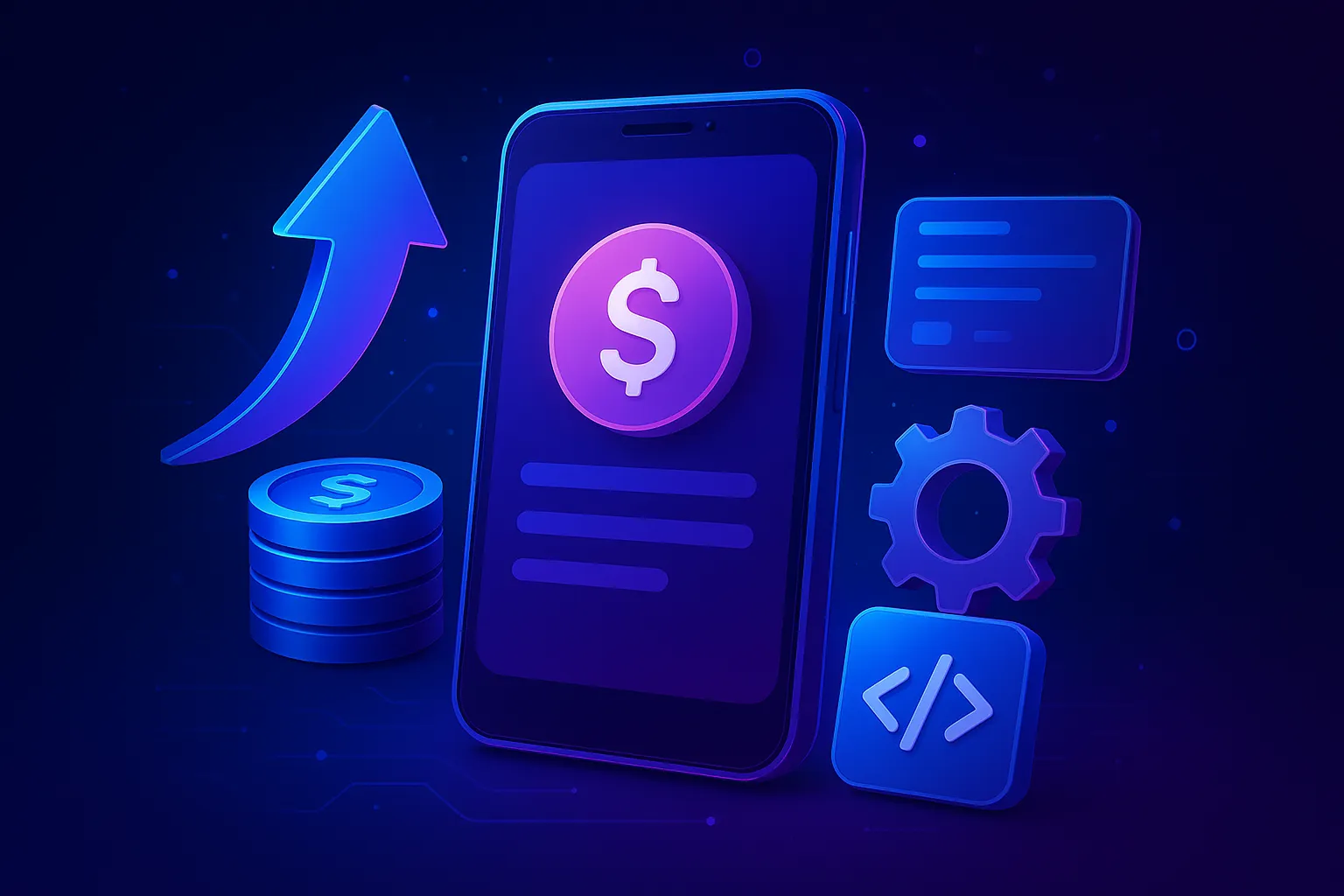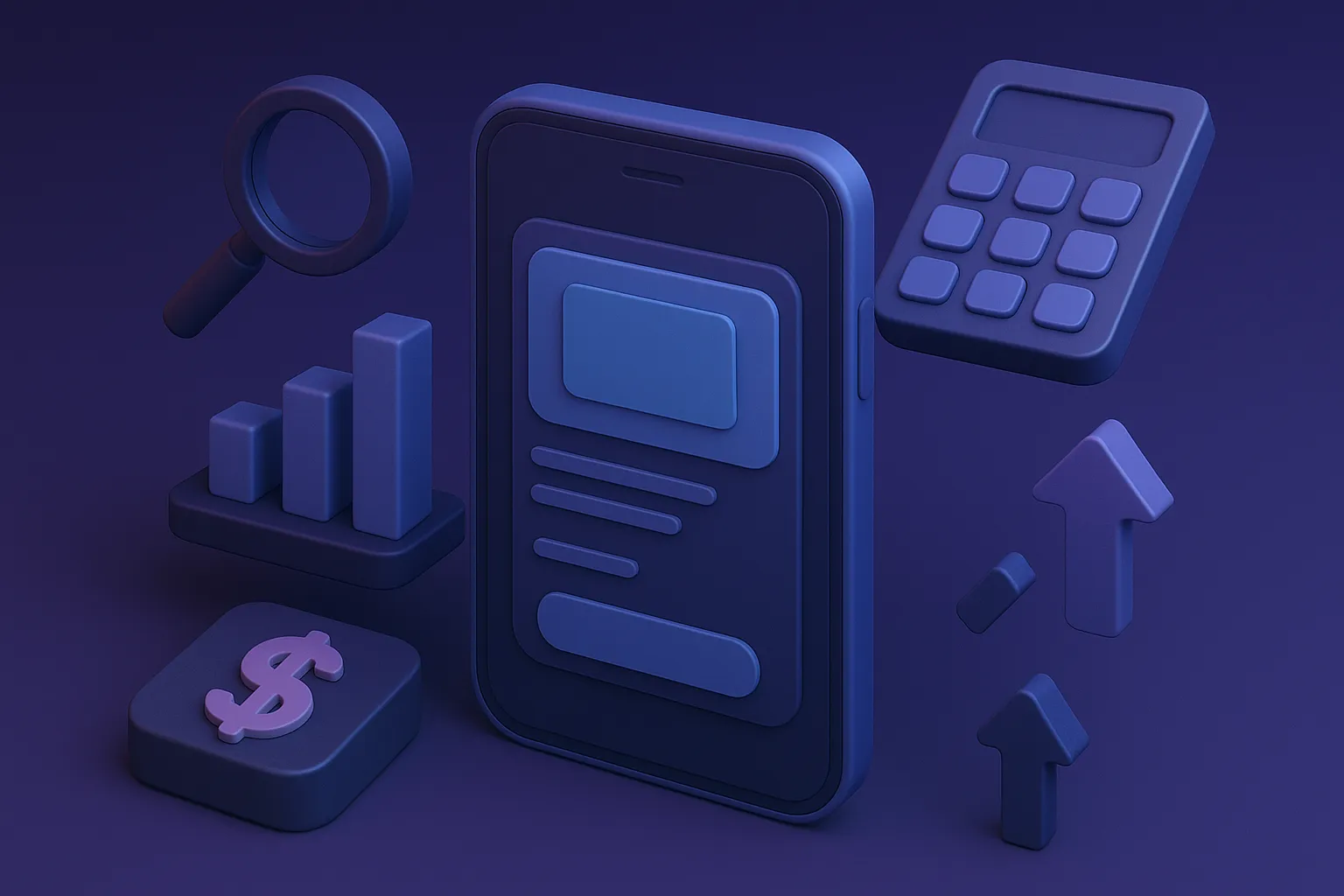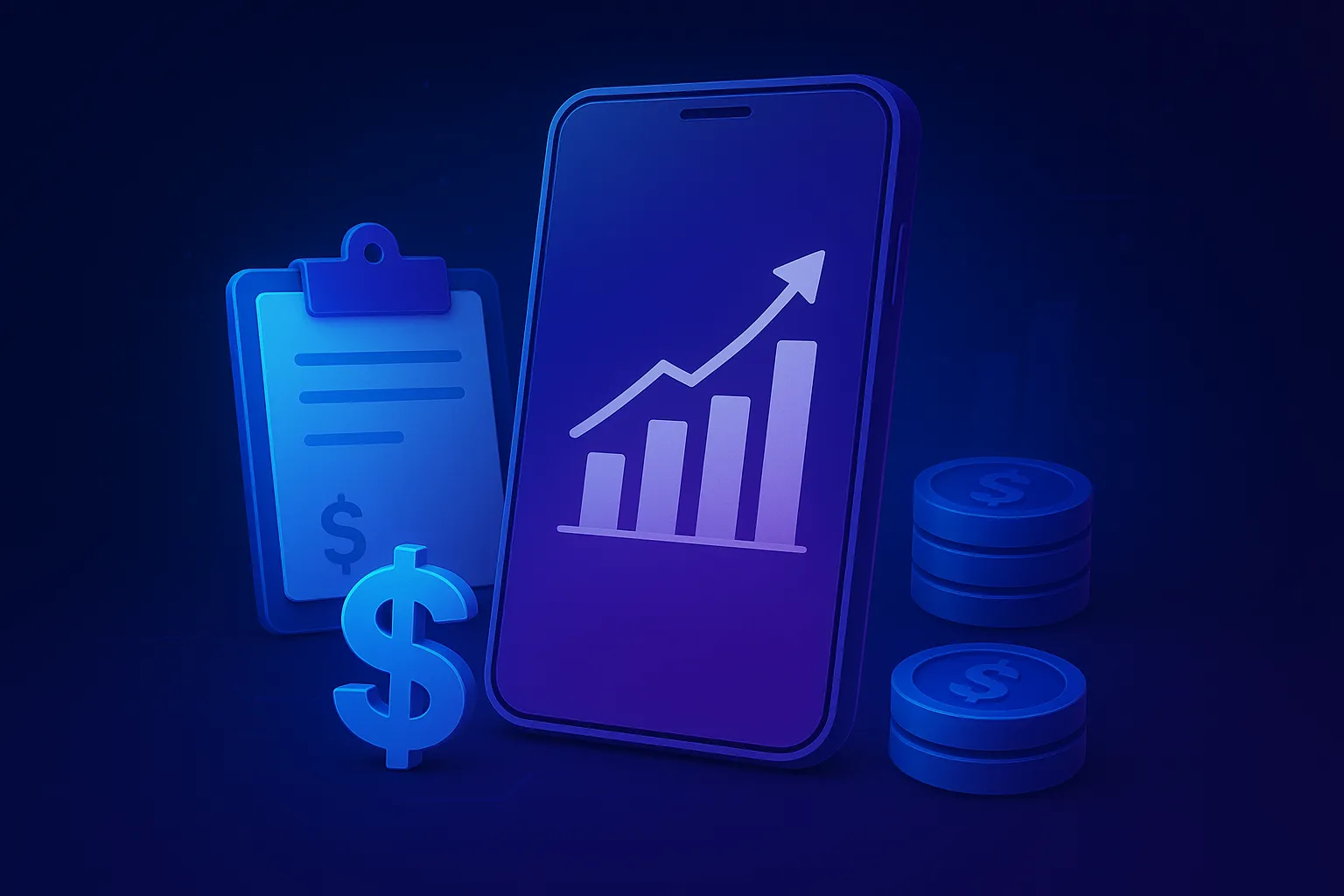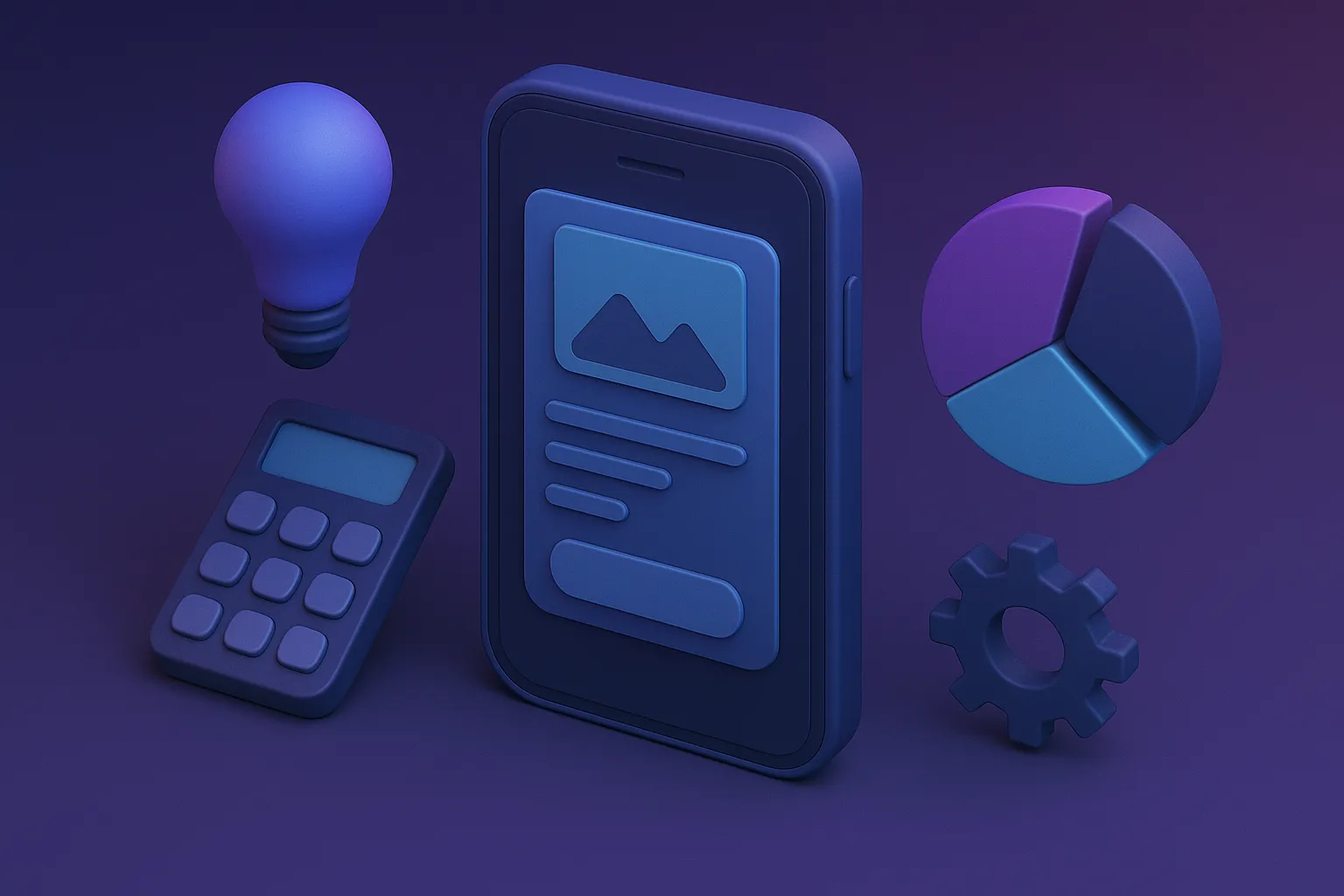Mobile App Development: Factors Affecting Price and Cost
Explore why mobile app development costs vary, the key factors shaping price, and how to optimize your budget without sacrificing quality.
Why Mobile App Development Costs Vary?
When businesses first explore the idea of building an app, they often expect a clear, fixed price. However, the reality is that mobile app development costs vary greatly from one project to another. Unlike buying an off-the-shelf product, developing a mobile application is a customized process, tailored to your business model, target users, and long-term goals.

Why Mobile App Development Costs Vary?
Several reasons explain this wide cost difference in custom software development. First, no two apps are exactly the same. A simple mobile app with basic features such as login and push notifications will cost significantly less than a complex solution with advanced functionalities like real-time tracking, AI-powered recommendations, or seamless third-party integrations.
Second, the development approach matters. Choosing between iOS, Android, or a cross-platform solution directly impacts not just the initial app development price, but also long-term maintenance costs. Similarly, a polished design with a unique user experience requires more time and resources compared to using standard templates.
Finally, the expertise and location of the development team play a crucial role. Hiring an in-house team in the United States, for example, will cost far more than outsourcing to skilled developers in Asia or Eastern Europe. In short, every app comes with its own set of requirements, and these differences shape the final mobile app development cost.
Key Factors Affecting Mobile App Development Price
When businesses ask about the price of developing a mobile app, the answer is rarely straightforward. The final figure is shaped by multiple factors: technical, strategic, and operational that interact in complex ways. Below, we’ll examine each factor in detail and explain how it can raise or reduce the mobile app development cost.

Key Factors Affecting Mobile App Development Price
1. Project Scope and Complexity
The scope of an app is the single biggest driver of cost. It defines what the app can do, how many user interactions it supports, and how complex its workflows are.
A simple app with only a few functions like user login and push notifications, may take weeks to build. But once you add more roles, complex interactions, and advanced logic, the development effort increases exponentially. Think of the difference between a basic note-taking app and a full-scale food delivery platform. The latter requires customer, driver, and merchant portals, real-time GPS tracking, secure payments, and order management systems, all of which demand extra development hours.
- Simple apps: basic authentication, static content, limited user interaction.
- Mid-range apps: integrations with payment gateways, geolocation services, or basic analytics.
- Complex apps: AI-driven recommendations, real-time messaging, multi-user role management, AR/VR.
- Enterprise-grade apps: cross-department integrations, advanced permissions, compliance requirements, data governance.
The higher the complexity, the more time and resources are required, which directly increases the app development price.
2. Platform Strategy: iOS, Android, or Cross-Platform
Choosing the right platform isn’t just about reaching your audience, it has major cost implications. Developing an app for iOS alone may limit your market but keeps costs manageable. Supporting both iOS and Android with separate native apps doubles the workload since each needs its own codebase.
Cross-platform frameworks like Flutter or React Native attempt to solve this by allowing one codebase for multiple platforms. This can lower initial costs but may create limitations for apps that need intensive hardware integration or cutting-edge performance. Over time, these limitations can introduce hidden costs if the app needs partial native rewrites.
- iOS native apps: smoother development process due to fewer device variations.
- Android native apps: larger user base globally, but higher QA/testing due to device fragmentation.
- Cross-platform apps: faster time to market, one codebase, potential trade-offs in performance or custom UI/UX.
3. Features and Third-Party Integrations
Every feature you add contributes to the development budget but not equally. Some are quick wins, others are cost-intensive due to technical complexity and security requirements.
Take authentication as an example. A simple email login system is relatively cheap, while implementing multi-factor authentication with biometrics significantly raises costs. The same goes for communication: adding push notifications is straightforward, but building real-time video calls with end-to-end encryption involves advanced infrastructure and compliance measures.
- Low-effort features: user profiles, static content feeds, basic push notifications.
- High-effort features: AI-based personalization, real-time chat, video streaming, complex search filters.
- Third-party APIs: accelerate development but may introduce recurring fees (Google Maps, payment gateways, SMS providers).
Features and integrations affect not only the upfront app development price but also ongoing operational costs.
4. Backend Infrastructure and Scalability
The backend is the unseen engine of any mobile app. A small-scale social app may get by with a simple backend hosted on Firebase, while an enterprise platform serving thousands of users simultaneously requires a carefully designed architecture with redundancy and load balancing.

Backend Infrastructure and Scalability
Key cost drivers in backend development include:
- Architecture choices: monolithic vs microservices. Microservices offer flexibility and scalability but come with added DevOps complexity.
- Data management: designing secure, scalable databases for high-volume transactions.
- Cloud services: hosting, storage, caching layers, content delivery networks, and monitoring tools.
- Scalability measures: auto-scaling servers, failover systems, and global distribution for apps targeting international markets.
Investing in a robust backend may feel costly upfront but saves money in the long run by reducing outages and ensuring the app can scale with user demand.
5. User Experience and Design
Design is often underestimated in budget planning, yet it plays a decisive role in user retention. A poorly designed app can have all the features in the world and still fail because users find it confusing or unattractive.
Design costs vary based on how much customization you require:
- Template-based design: quick and inexpensive, but risks making your app indistinguishable from competitors.
- Custom UI/UX: crafted around user research, prototyping, and brand identity. It requires more design hours but often pays off with higher engagement.
- Advanced design elements: animations, gesture-based navigation, accessibility features, and multilingual support.
The deeper the design process goes, user journey mapping, wireframing, interactive prototypes, the higher the mobile app development cost, but also the greater the chance of building an app people love to use.
6. Development Team Location and Expertise
The cost of talent varies dramatically across regions. A senior mobile developer in San Francisco may charge $120 to $150 per hour, while equally skilled professionals in Eastern Europe or Southeast Asia may charge $30 to $50.
Beyond location, team structure also influences cost:
- Small projects: one or two developers plus a designer may be enough.
- Medium projects: require project managers, QA engineers, backend developers, and DevOps specialists.
- Large projects: may need multiple teams working in parallel, each specializing in different modules.
Choosing between in-house teams, freelancers, or outsourcing agencies also affects not just the app development price but also communication, accountability, and long-term support.
7. Maintenance and Post-Launch Costs
Launching an app is only the beginning of its financial journey. Mobile operating systems are updated annually, and new devices enter the market constantly. Without continuous updates, apps risk crashes, poor reviews, and eventual abandonment.
Ongoing costs typically include:
-
System updates: adapting to iOS/Android changes.
-
Bug fixes and patches: ensuring security and stability.
-
Feature enhancements: staying competitive by rolling out improvements.
-
Server and hosting fees: scaling with user growth.
Industry benchmarks suggest allocating 15 to 20% of the original development budget each year for maintenance and updates. Failing to plan for these expenses can result in higher emergency costs later.
The mobile app development cost is not dictated by a single variable. Instead, it emerges from the interplay between scope, platform, features, infrastructure, design, team composition, and maintenance needs. Each choice has trade-offs, and businesses must decide where to spend for maximum impact.
By understanding these factors in detail, companies can prioritize essential features, choose the right technologies, and allocate resources wisely ensuring they get an app that meets user expectations without overspending.
Average Mobile App Development Cost Estimates
When it comes to mobile app development costs, many businesses expect a single, clear number. The truth is, there isn’t a universal price tag. Instead, the cost of building an app sits on a spectrum, ranging from relatively modest budgets for simple apps to much larger investments for advanced, feature-rich platforms.

Average Mobile App Development Cost Estimates
Think of app development like building a house. A small, one-bedroom home will naturally cost less than a multi-story mansion with custom architecture, luxury materials, and smart technology. Similarly, a straightforward mobile app with core features requires fewer resources compared to a complex solution involving real-time data synchronization, AI-driven features, or enterprise-level security.
In general, average cost estimates can be grouped into categories based on the app’s scope:
- Basic apps: Focused on a limited set of features, minimal design, and faster delivery timelines.
- Mid-level apps: Include richer functionality, more sophisticated design, and integrations with external services.
- Complex apps: Require advanced technology stacks, high scalability, and continuous development support.
Instead of focusing solely on the upfront price, it’s often wiser to consider the long-term value of your app investment. A well-built app doesn’t just fulfill immediate needs, it can scale with your business, support customer engagement, and generate revenue over time.
How to Optimize Your Mobile App Development Budget
Budgeting for mobile app development is often one of the toughest challenges businesses face. While costs can vary widely, smart planning and strategic decisions can help you stay within budget without sacrificing quality or innovation. The key lies in knowing where to invest and where to streamline.

How to Optimize Your Mobile App Development Budget
1. Define clear goals and core features
One of the most common reasons app budgets spiral out of control is feature overload. Businesses often try to include everything from the start, but not every feature is critical in the first version.
- Identify the primary purpose of your app.
- Separate “must-have” features from “nice-to-have” ones.
- Focus on delivering a Minimum Viable Product (MVP) before expanding.
This approach not only reduces initial costs but also allows you to test the market and refine features based on real user feedback.
2. Choose the right development approach
The platform and technology stack you select have a direct impact on cost. For example:
- Native development ensures top performance but requires building separate apps for iOS and Android.
- Cross-platform frameworks like Flutter or React Native allow you to target multiple platforms with a single codebase, cutting development time and cost.
Choosing wisely based on your goals and user base helps you avoid overspending while ensuring long-term scalability.
3. Collaborate with the right team
Not all development teams are created equal. A high hourly rate doesn’t always guarantee the best results, and the cheapest option may lead to costly fixes later. To optimize your budget:
- Partner with a team that has proven expertise in your industry.
- Look for a balance between cost efficiency and technical skill.
- Prioritize transparent communication to prevent misunderstandings and rework.
4. Plan for long-term maintenance
Many businesses overlook ongoing costs such as updates, bug fixes, server hosting, or adding new features. Setting aside part of your budget for maintenance and scaling ensures your app remains competitive and functional over time.
5. Leverage agile development practices
Adopting an agile approach allows for flexible planning and continuous improvement. Instead of committing to a massive upfront budget, you can:
- Develop in short iterations (sprints).
- Test features with real users early.
- Adjust your roadmap as the project evolves.
This keeps spending aligned with actual business priorities, reducing waste and maximizing return on investment.
By applying these strategies, businesses can strike a balance between cost efficiency and quality delivery. The result isn’t just a cheaper app, it’s a smarter investment that grows alongside your business needs.
Why Choosing the Right Development Partner Matters
Even with a clear strategy and budget plan, the success of your app largely depends on who builds it. The right development partner does more than write code, they act as a trusted advisor, helping you navigate challenges, refine your vision, and maximize the value of your investment.
A reliable partner can:
- Turn ideas into reality by translating business needs into technical solutions.
- Anticipate challenges and offer practical alternatives to save both time and money.
- Ensure quality and scalability so your app can grow with your business.
- Provide ongoing support, including updates, bug fixes, and feature enhancements.
On the other hand, choosing the wrong team may result in poor code quality, misaligned expectations, and costly delays. Many businesses underestimate this step, only to face unexpected expenses later when issues need fixing.
To select the right partner for mobile application development, businesses should look beyond pricing alone. Factors such as experience, portfolio, communication style, and understanding of your industry matter just as much if not more. In many cases, paying a little extra for a seasoned, trustworthy team can save you significant resources in the long run.
Ultimately, a strong development partnership ensures your mobile app is not just built, but built to last. With the right expertise by your side, your project is more likely to stay on budget, meet deadlines, and deliver real value to users.
Conclusion
Navigating the world of mobile app development costs can feel overwhelming at first. With so many factors at play from app complexity and design choices to development approach and team expertise, it’s clear that there’s no universal price tag. What truly matters is making informed decisions that balance cost with quality, ensuring your app delivers real value to your users and long-term returns for your business.
Optimizing your budget isn’t about cutting corners; it’s about prioritizing the right features, selecting scalable technologies, and partnering with professionals who understand both your vision and the market. When approached strategically, even a modest investment can evolve into a powerful tool that drives engagement, growth, and competitive advantage.
At the end of the day, the partner you choose can make all the difference. With the right guidance and expertise, your mobile app won’t just be another digital product, it will become a cornerstone of your business success. If you’re ready to turn your idea into reality while keeping your budget in check, finding a trusted development partner like Serdao is the first step toward building an app that lasts.
Blog Software Development:
What is Custom Software Development